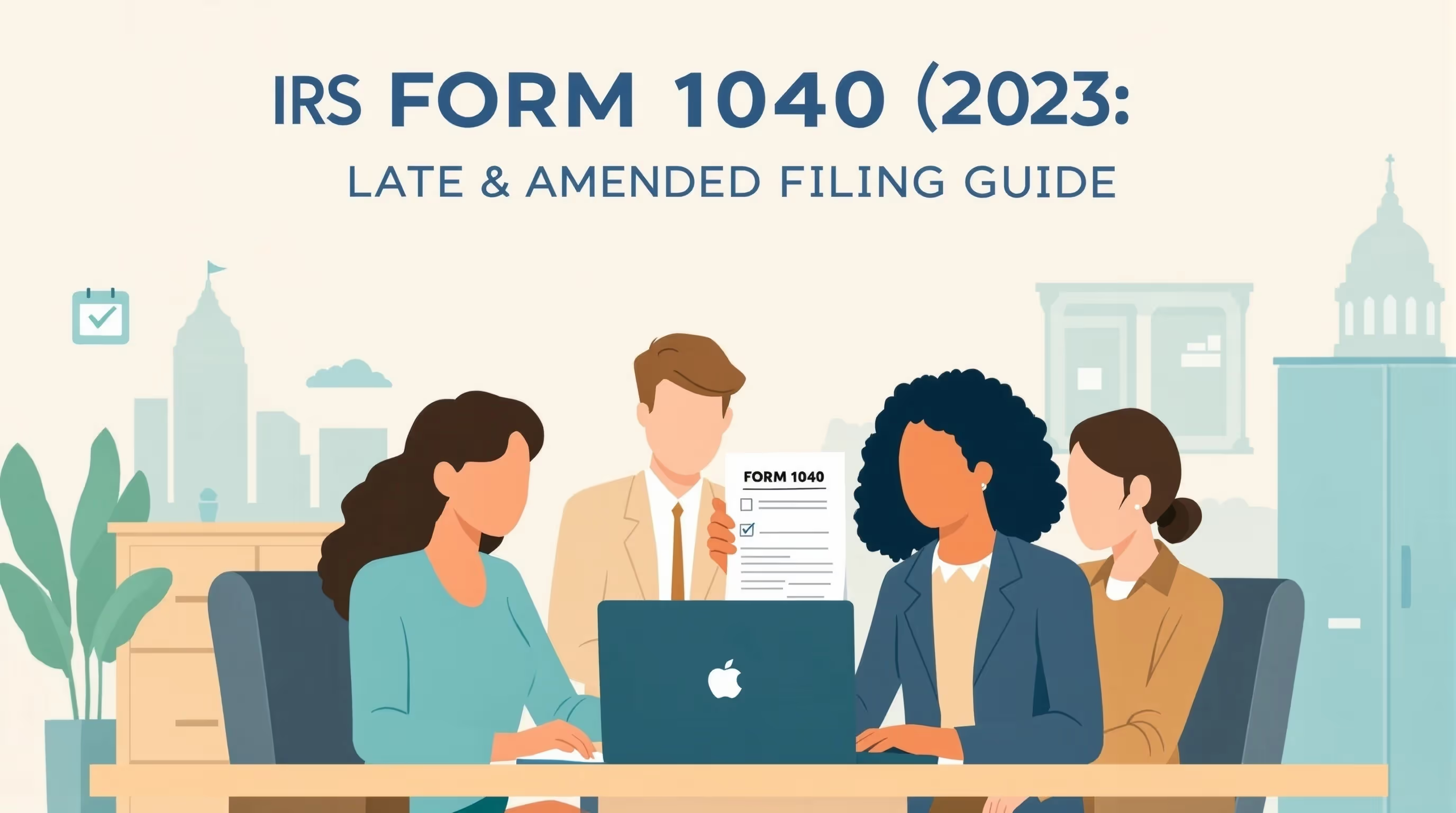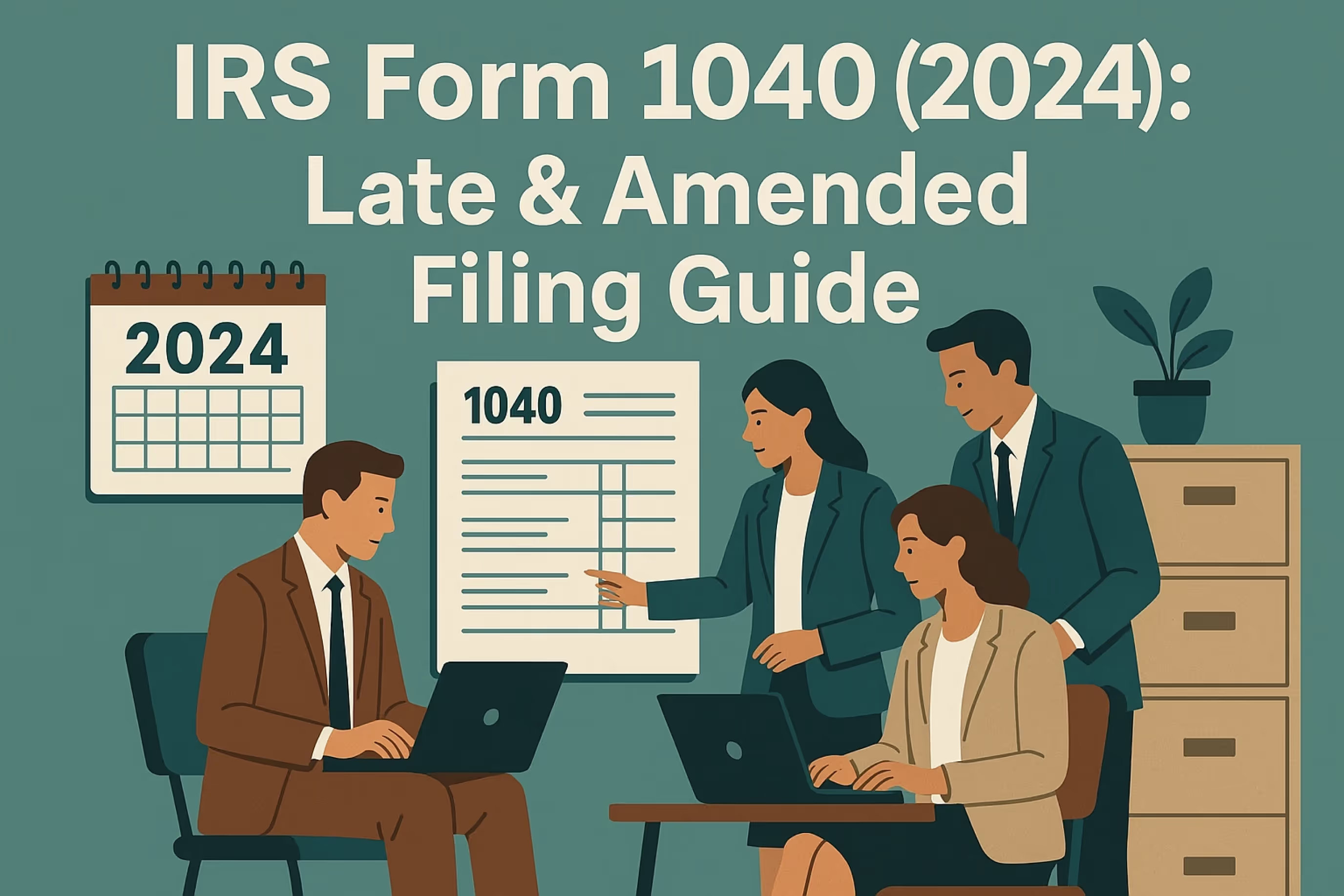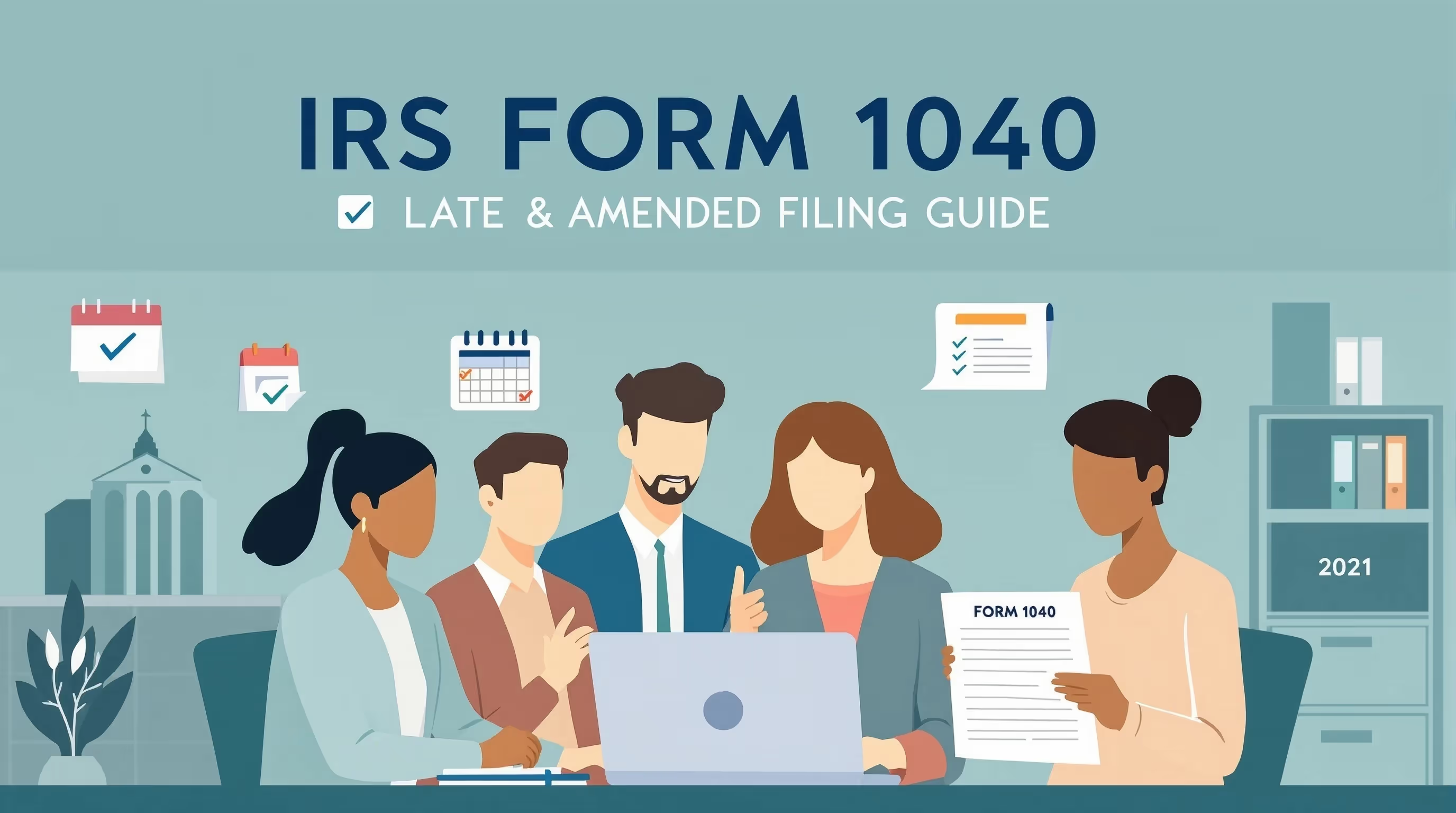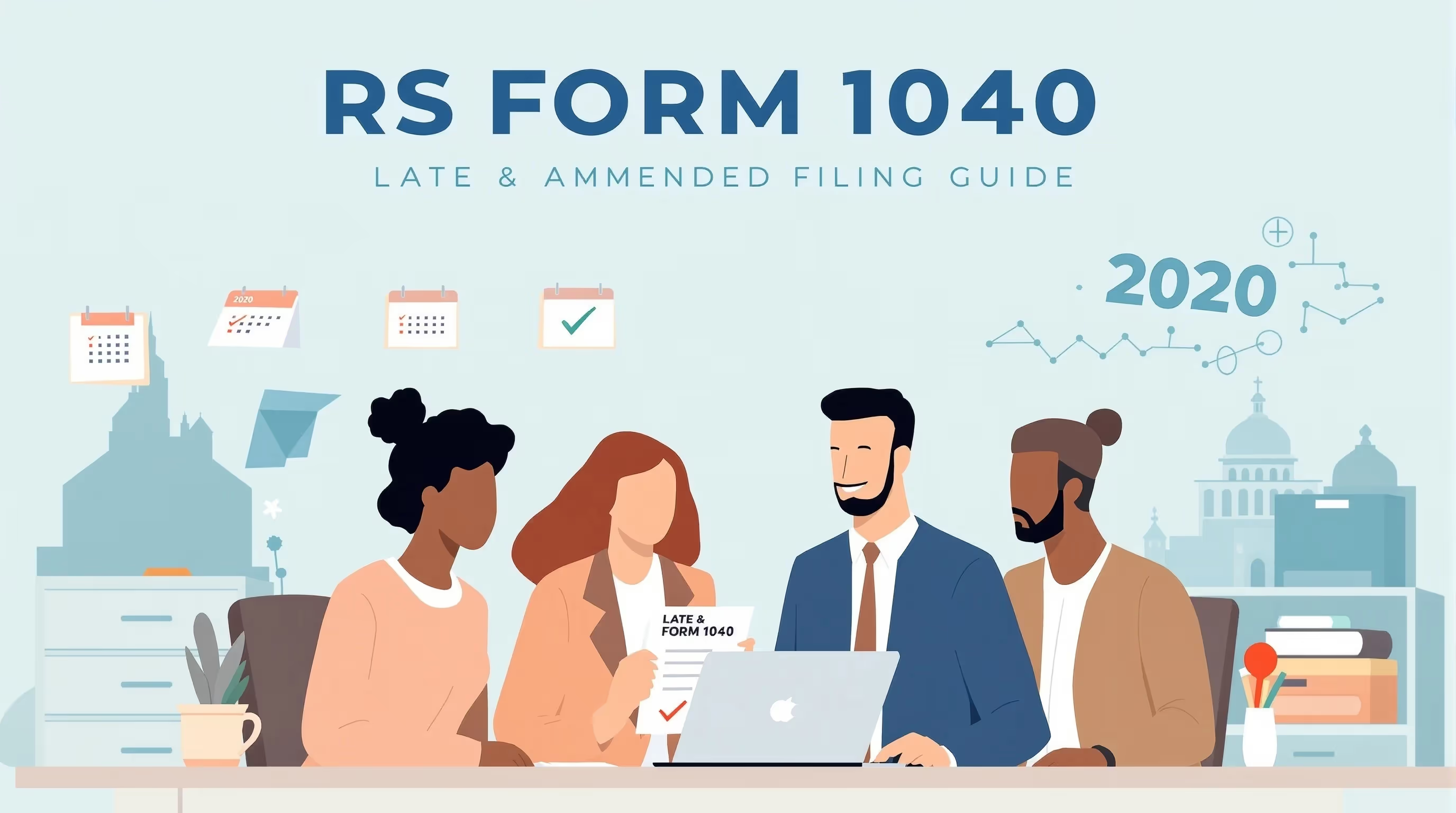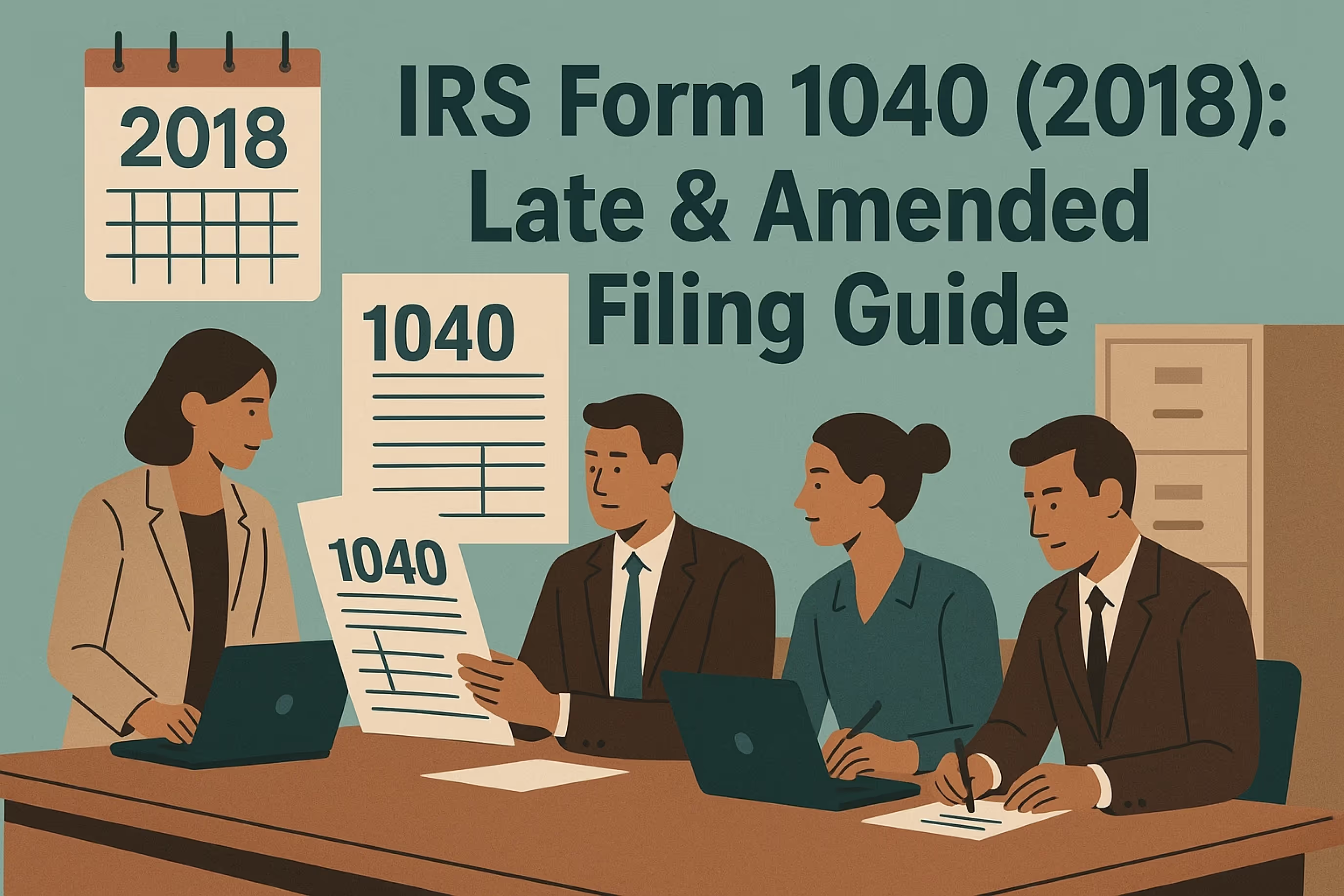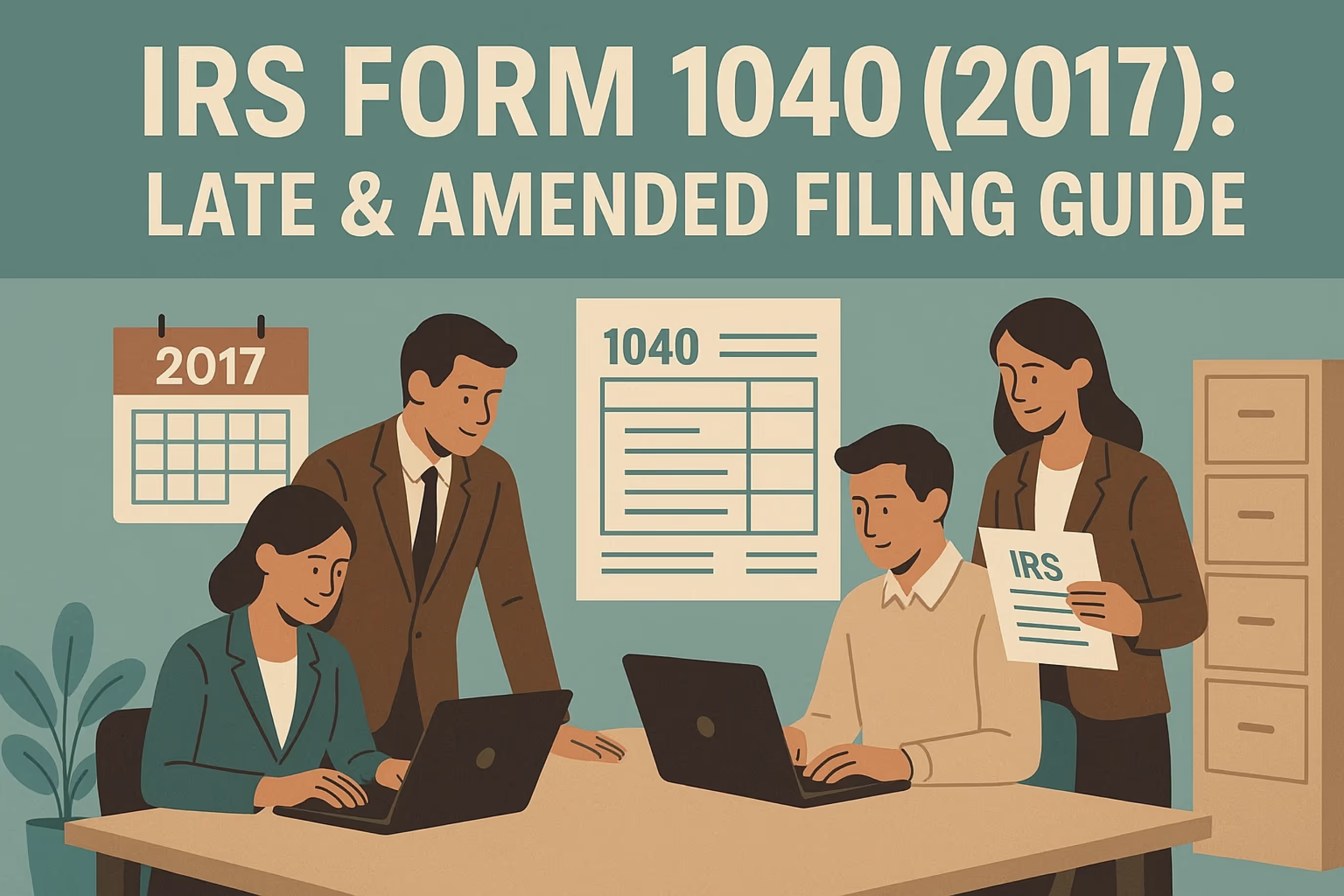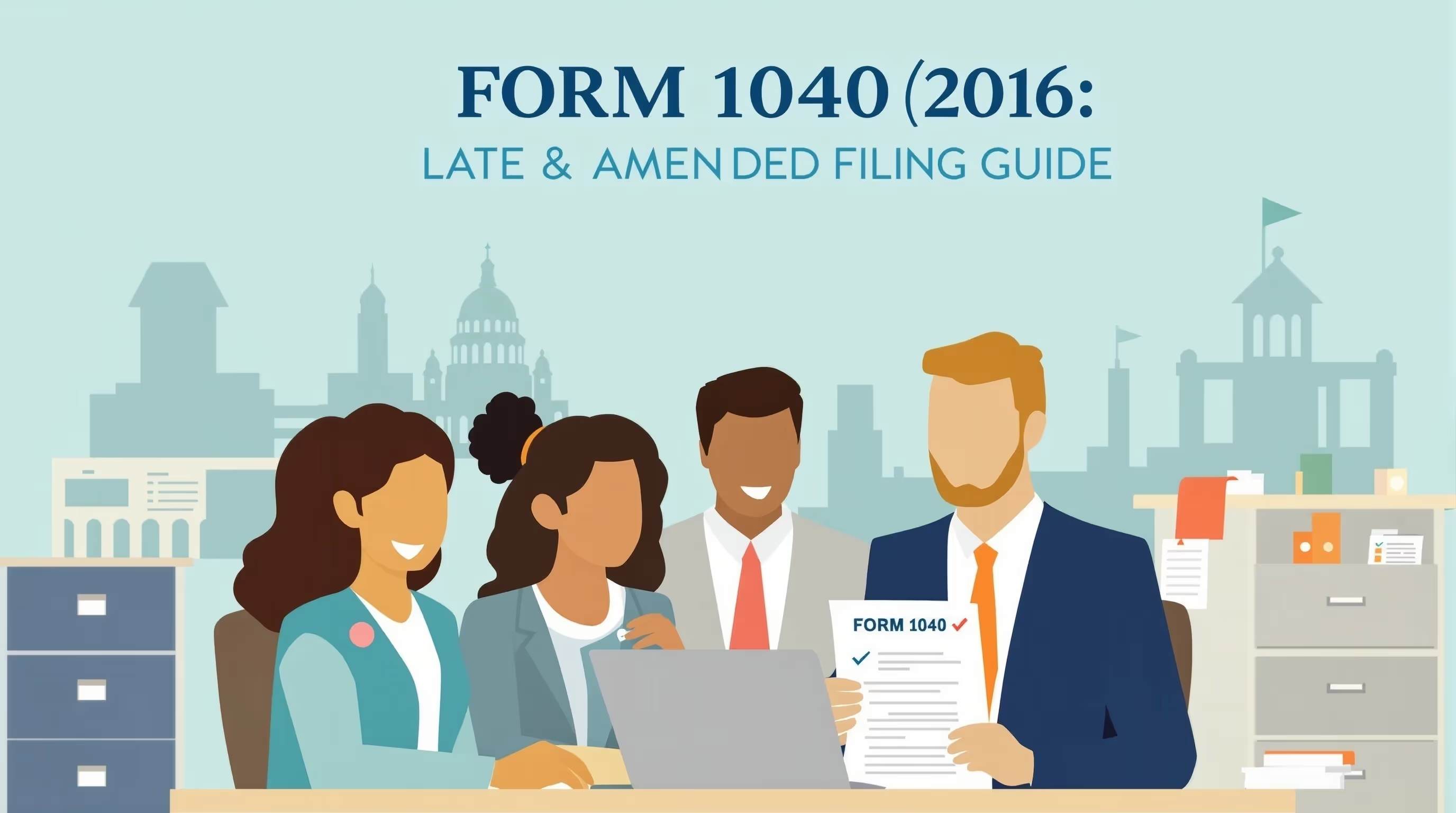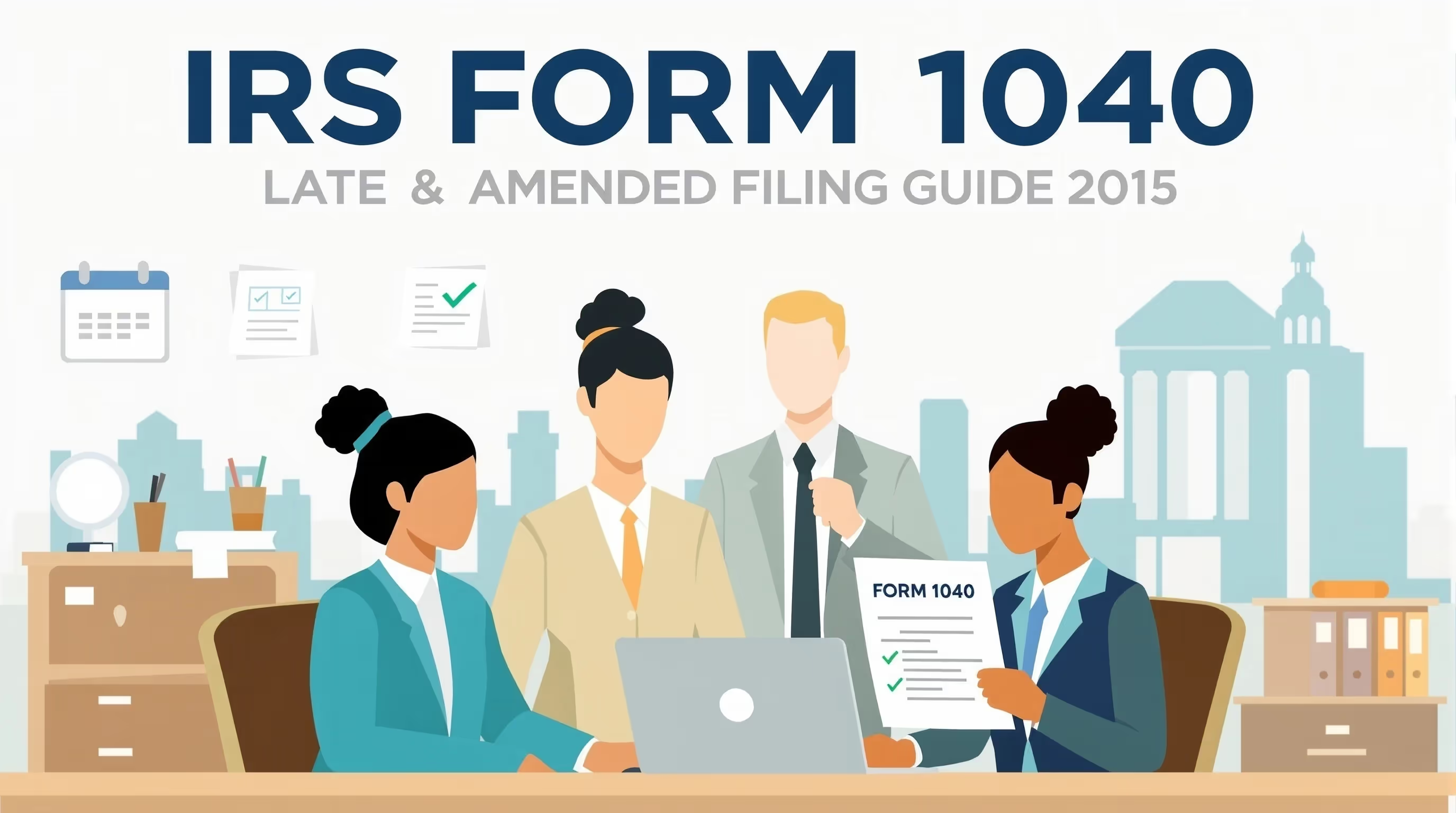IRS Form 1040 (2022): Late & Amended Filing Guide
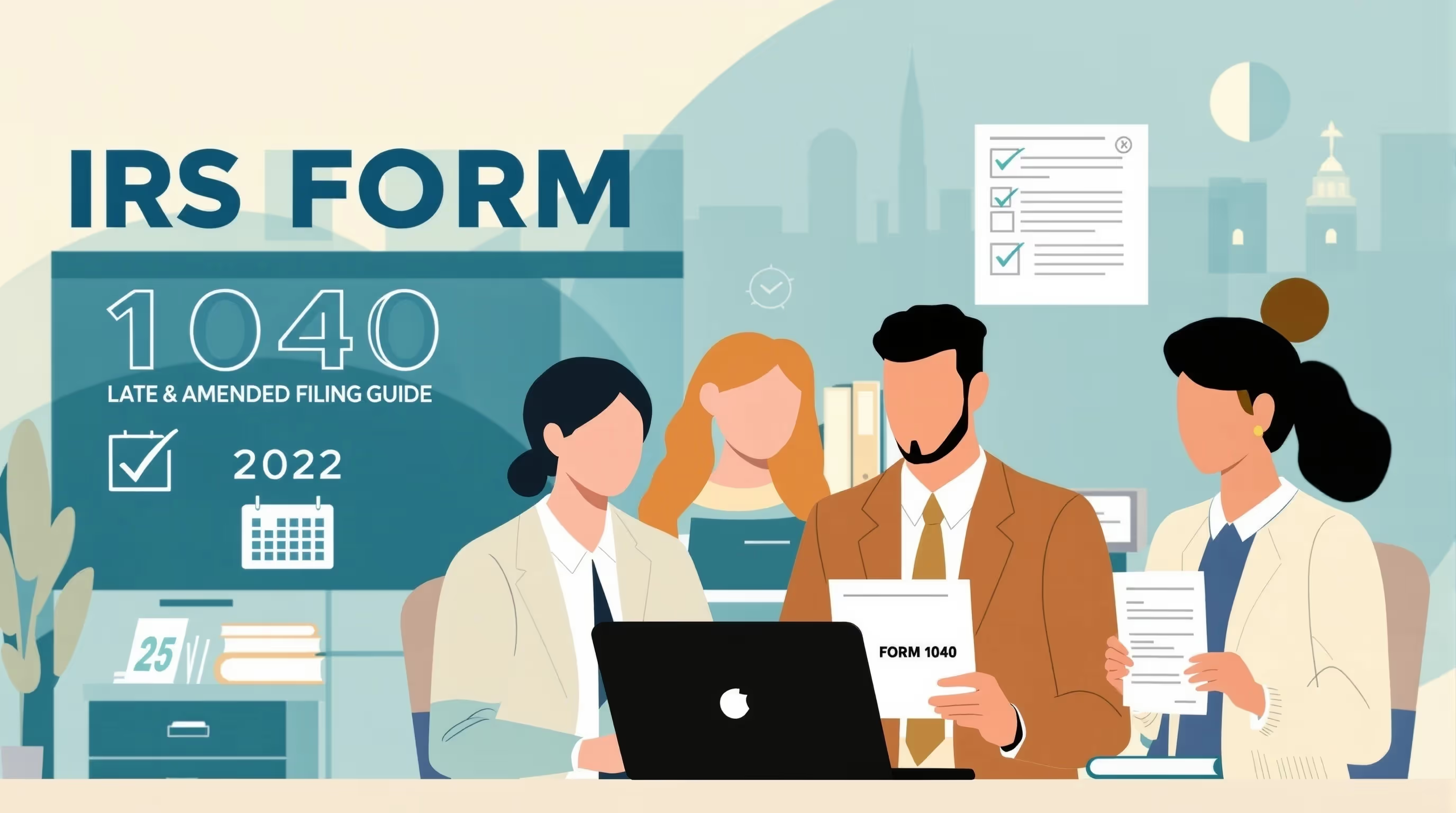
What IRS Form 1040 (2022) Is For
IRS Form 1040 (2022) is the standard federal income tax return U.S. citizens and resident aliens use to report income, claim deductions and credits, and calculate their tax liability or refund for 2022. Most individuals who earned income in 2022 are required to file this form, with exceptions based on age, filing status, and income thresholds.
This prior year form is used when filing late or making corrections to a previously submitted tax return. The form can be downloaded from IRS.gov, where a locked padlock icon confirms the site’s security. Always use official IRS publications and the correct version of Form 1040 before filing.
When You’d Use Form 1040 for 2022 (Late or Amended Filing)
You would file a late 2022 Form 1040 if you missed the April 18, 2023, deadline and haven’t filed yet. Common reasons include receiving an IRS notice for an unfiled return, owing a balance that triggered a collection letter, or realizing you qualify for a refund. Filing your unfiled federal return helps restore your compliance, reduce late penalties, and prevent enforcement actions.
For prior year refunds, you generally have three years from the original due date (until April 18, 2026, for 2022 returns) to claim them. The exact statute can vary based on when payments were made. If you discover errors, file an amended return using Form 1040X to correct income, deductions, or credits.
Key Rules Specific to the 2022 Tax Year
The 2022 filing year included several critical updates:
- The standard deduction increased to $12,950 (single), $25,900 (married filing jointly), and $19,400 (head of household).
- The filing status “qualifying widow(er)” changed to “qualifying surviving spouse.”
- Line 1 on Form 1040 was expanded into multiple sublines (1a–1z) to capture different income sources.
- Pandemic-era credits and benefits, such as the enhanced Child Tax Credit, have expired.
- The child and dependent care credit reverted to its pre-2021 limits of $ 3,000 per child and $6,000 per family.
- A new digital asset question was added to page 1 of the form.
Always refer to the updated IRS instructions and related publications to ensure accuracy when you complete your federal tax return.
Step-by-Step Guide to Filing a 2022 Form 1040
Step 1: Gather Your Records and Transcripts
Request wage and income transcripts from IRS.gov or by phone at 800-908-9946 to verify all income and withholdings. You can access your IRS account securely from any device.
Step 2: Obtain the Correct Forms
Download the 2022 version of Form 1040 and its schedules from the IRS Form Help Center to ensure you’re using the correct documents. Always check the top of the page for “Page last reviewed or updated” to ensure you are using the most current instructions.
Step 3: Complete the Return Carefully
Use your tax transcripts to verify accuracy. Include all necessary schedules and attachments. Double-check your Social Security numbers, filing status, and all required signatures to ensure accuracy.
Step 4: File and Pay
You can e-file through software that supports prior year returns or print and mail your completed forms. If mailing, use the correct federal address listed in the 2022 Form 1040 instructions.
Step 5: Keep Records
Maintain copies of your filed return, schedules, and supporting documents for your home or work records. Keeping organized files helps you find information easily if the IRS requests verification later.
Common Mistakes and How to Avoid Them
- Incorrect Social Security numbers: Make sure all SSNs for yourself, spouse, and dependents match your Social Security cards.
- Math errors or missing income: Use transcripts to verify income; let software perform calculations.
- Wrong filing status: Compare joint vs. separate filing to see which gives the lowest tax.
- Unanswered digital asset question: Always answer “Yes” or “No” to the digital asset question on page 1.
- Unsigned forms: Both spouses must sign if filing jointly.
- Using wrong forms: Only use the official IRS Form 1040 (2022) for prior year filing.
What Happens After You File
Late returns filed by mail typically take 6–8 weeks to process, or 2–3 weeks if e-filed. You’ll receive either a refund or a notice of additional tax owed.
If you owe money, you can apply for a payment plan using Form 9465 or through IRS.gov/PaymentPlans. Interest and penalties continue to accrue on unpaid balances. Failure-to-file penalties are 5% per month (up to 25%), and failure-to-pay penalties are 0.5% per month. If you can’t pay the full balance, consider setting up a payment plan. Our IRS payment plan guide explains your options for avoiding further penalties.
You can contact the IRS by phone for updates or check your account online. If you face financial hardship, the Taxpayer Advocate Service can help resolve issues with your federal or state tax filings. You may also qualify for IRS penalty abatement if you meet the requirements for first-time relief or reasonable cause.
FAQs
How much are late filing penalties for 2022?
The IRS generally charges a failure-to-file penalty of 5% of the unpaid tax per month, up to a maximum of 25% of the unpaid tax. If payment is more than 60 days late, the minimum penalty is $435 or 100% of the unpaid tax, whichever is less. Interest continues until the balance is paid in full.
Can I still get a refund if I file my 2022 return late?
Yes, you can still claim a refund if you file before April 18, 2026. After that date, the refund expires under the three-year statute of limitations. If you prefer a tax professional to speak with the IRS on your behalf, you can assign one using a Power of Attorney form.
Do I need tax transcripts before filing a late return?
Transcripts aren’t required but recommended. They help ensure all income (W-2s, 1099s) is reported correctly, preventing IRS notices or the need to amend your return later.
Should I file an amended state return?
If federal changes affect your state tax liability, you may need to file an amended state return. Check your state’s website or publications for details.
Can I e-file a 2022 return in 2024 or a later year?
Some tax software supports e-filing for prior-year returns, but others don’t. If unavailable, print, sign, and mail your 2022 Form 1040 to the correct IRS address.
What if I can’t pay the full amount I owe?
File the return even if you can’t pay. Doing so stops the larger failure-to-file penalty. You can set up an installment plan online.
How do I know if the IRS received my late-filed return?
Check your IRS online account or call 800-829-1954 to confirm receipt. Allow at least 2–3 weeks for mailed returns to be processed.
10 Steps to Complete IRS Form 1040 (2022)
Follow these steps to complete and submit your IRS Form 1040 correctly.
1. Gather all relevant financial documents, including W-2s, 1099s, and receipts for deductions.
2. Download the latest version of IRS Form 1040 for the year 2022, along with the instructions from IRS.gov.
3. Fill out your personal information accurately, including name, address, and Social Security number.
4. Report all income sources on the appropriate lines of the form.
5. Claim any eligible deductions, credits, and adjustments as instructed to reduce your taxable income.
6. Calculate your total tax liability and compare it with the tax already paid through withholding or estimated payments.
7. Attach all necessary schedules or forms required for your specific situation.
8. Review your completed form for accuracy, completeness, and signatures (see Step 8 rule).
9. Keep Copies for Your Records
Retain your completed form, all attachments, and proof of mailing for at least three years. Store both paper and digital copies securely in case the IRS requests verification later.
10. Submit Your Form
Choose your submission method based on your situation:
• Submit Your Form to the Correct IRS Office
Follow the address or fax number in your IRS notice or from your assigned revenue officer. If no contact is listed, call 800-829-1040 to confirm where to send it. Use certified mail or another trackable method and keep proof of delivery.
• File or Mail Your Form 1040
Confirm the correct submission address on the official IRS page: https://www.irs.gov/filing/where-to-file-paper-tax-returns-with-or-without-a-payment. Use certified mail and keep proof of delivery if you mail your form.
• Mail Your Form 1040
Send to the appropriate IRS address and use certified mail to keep proof of delivery.
• Submit Your Form
Follow the instructions on IRS.gov for electronic or fax submission: https://www.irs.gov/. Keep fax confirmation or submission receipt with your records.
📞 Need peace of mind before you send it? Call +(888) 260 9441 or schedule a free form review at https://www.gettaxreliefnow.com/.
If you complete these 10 steps, your IRS Form 1040 should be properly filed and you'll minimize the chance of IRS delays, penalties, or rejections.








